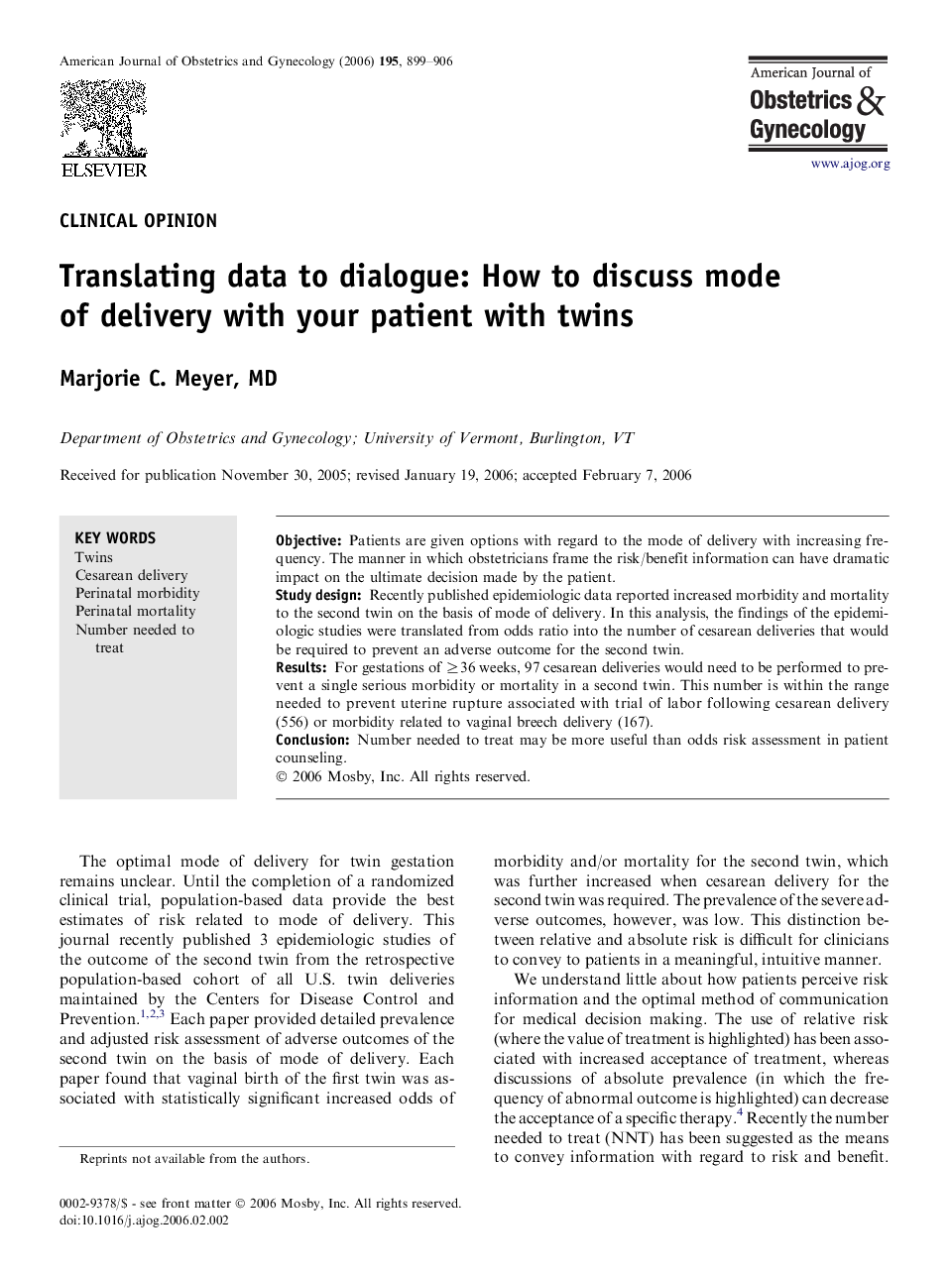| Article ID | Journal | Published Year | Pages | File Type |
|---|---|---|---|---|
| 3440732 | American Journal of Obstetrics and Gynecology | 2006 | 8 Pages |
ObjectivePatients are given options with regard to the mode of delivery with increasing frequency. The manner in which obstetricians frame the risk/benefit information can have dramatic impact on the ultimate decision made by the patient.Study designRecently published epidemiologic data reported increased morbidity and mortality to the second twin on the basis of mode of delivery. In this analysis, the findings of the epidemiologic studies were translated from odds ratio into the number of cesarean deliveries that would be required to prevent an adverse outcome for the second twin.ResultsFor gestations of ≥36 weeks, 97 cesarean deliveries would need to be performed to prevent a single serious morbidity or mortality in a second twin. This number is within the range needed to prevent uterine rupture associated with trial of labor following cesarean delivery (556) or morbidity related to vaginal breech delivery (167).ConclusionNumber needed to treat may be more useful than odds risk assessment in patient counseling.
